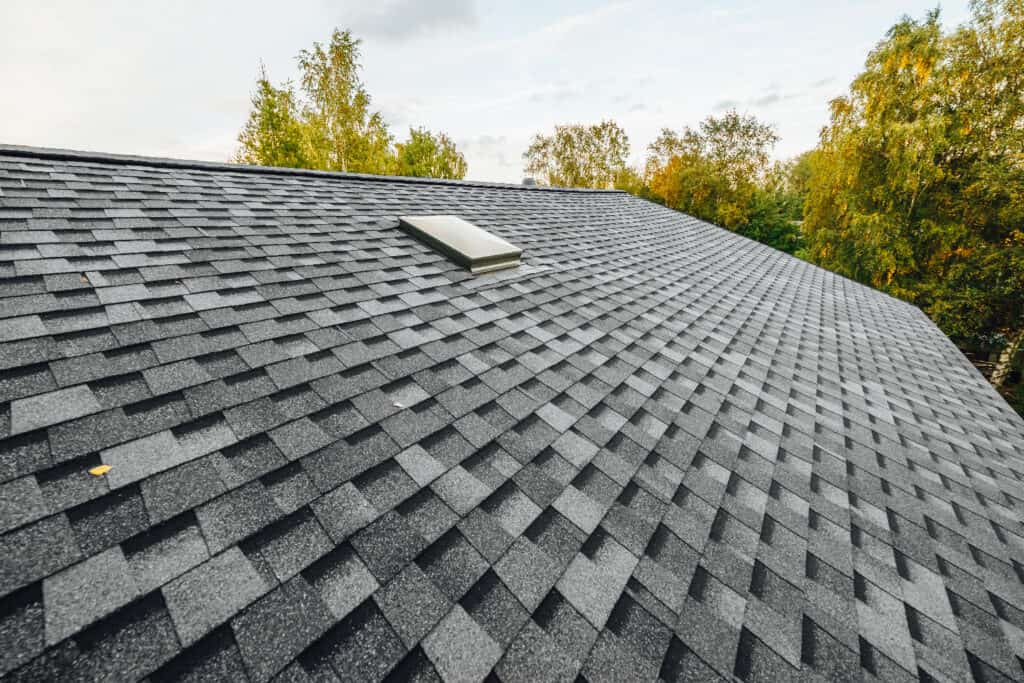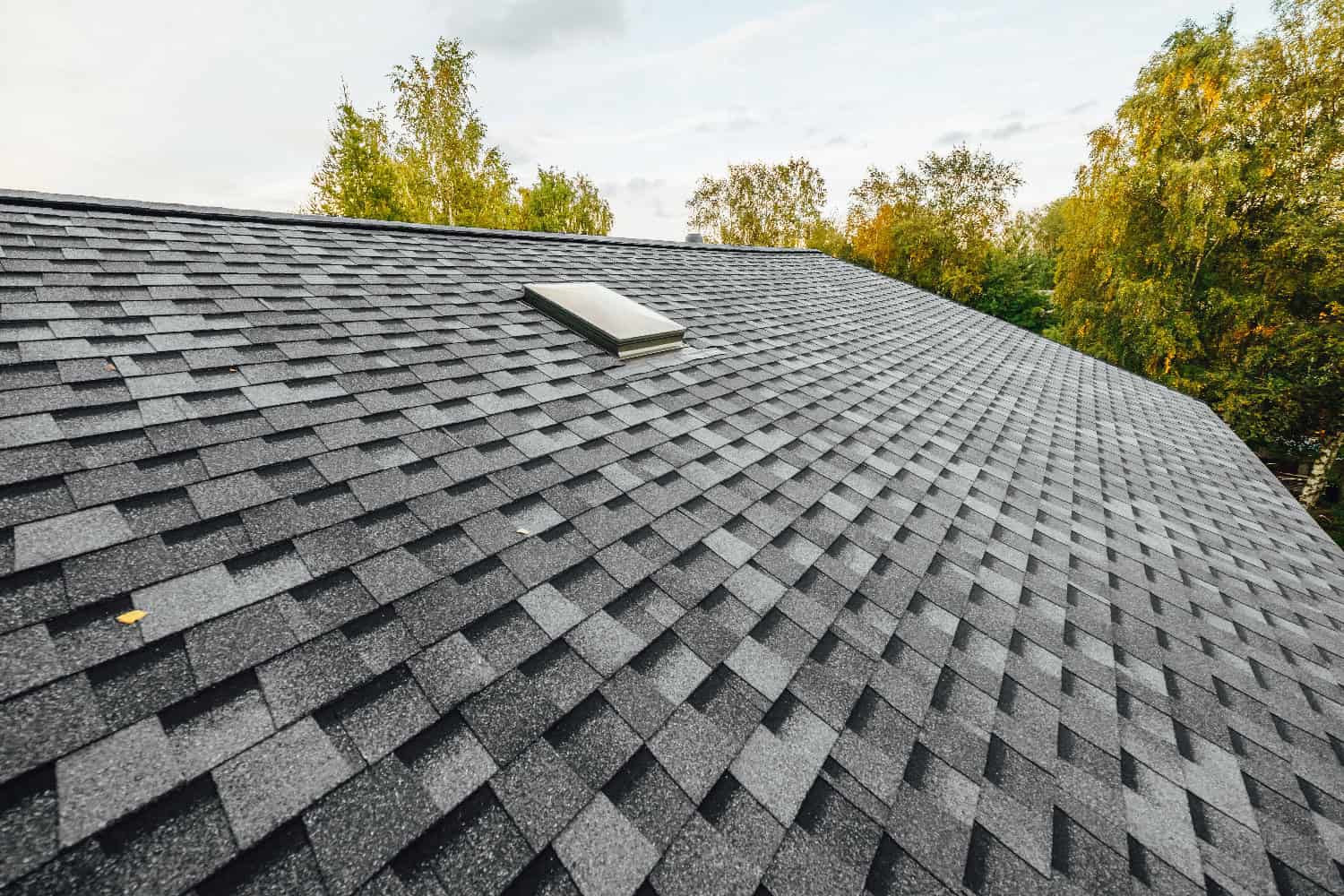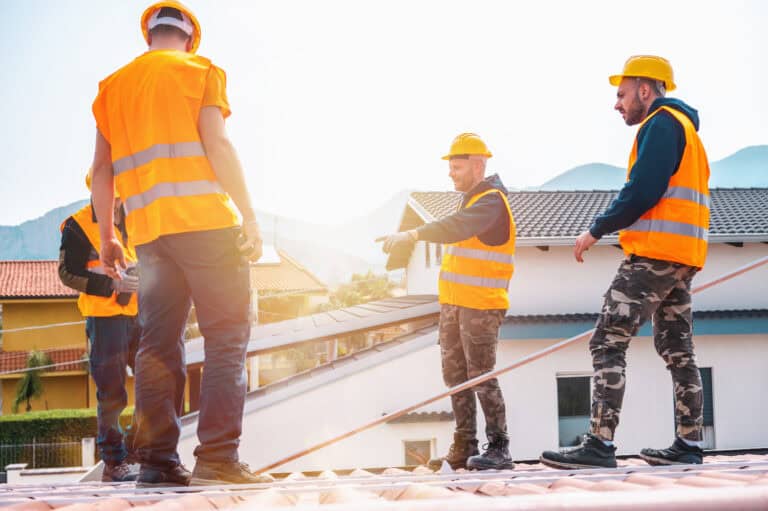Noticing signs of shingle granule loss? It’s more than an aesthetic issue; it’s a sign your roof may be at risk. Our focused article answers the urgent question: ‘What can I do about shingle granule loss?’ Learn about its causes, impacts, and the steps you can take to protect your home’s roof right here.
Inside this blog:
- The Role of Granules in Asphalt Shingles
- Recognizing the Signs of Granule Loss
- The Steps to Repairing Your Roof After Granule Loss
The Role of Granules in Asphalt Shingles
Although shingle granules might appear insignificant, they play a paramount role in maintaining the health of your roof. Envision a shingle: a layered warrior composed of a base material, a layer of asphalt, and a shield of mineral granules. These granules are the roof’s first responder against ultraviolet rays, acting as a fire retardant, and ultimately enhancing the roof’s lifespan by protecting the asphalt and fiberglass mat. In fact, the presence of a single shingle granule can make a difference in the overall performance of your roofing system.
Far from being mere decorative elements, granules have advanced with technology and now possess properties that soak up or bounce back UV rays, enhancing their retention and further prolonging your roof’s lifespan.
Shielding from UV Rays
Without its granule sunscreen, your roof would be as vulnerable to the sun’s harsh glare as unprotected skin. The granules provide a UV-resistant armor that reduces heat absorption and defends the roof from sun damage. This protection is akin to a shield deflecting the sun’s arrows, which, without it, would prematurely age and deteriorate your roofing materials.
Cutting-edge roofing materials now incorporate coatings intended to soak up or reflect UV rays, enhancing their durability and aiding your home’s energy efficiency.
Enhancing Fire Resistance
Your roof’s protective granules function much like a firefighter’s outer gear, boosting the fire resistance of your shingles and adding another layer of protection. In the event of a fire, these granules help prevent the flames from spreading across the roof’s surface.
Extending Shingle Life
Granules are the unsung heroes that add years to your roof’s life. They form a protective barrier over the asphalt coating, shielding it from environmental ravages that can otherwise accelerate the aging process. When granules shed prematurely, perhaps due to manufacturing defects, they leave the asphalt substrate exposed, vulnerable to environmental damage, and potentially shortening the roof’s lifespan.
Granule loss can be a sign of a compromised roof, one that may affect not only your home’s protection but also its market value.
Recognizing the Signs of Granule Loss
Aware homeowners understand that spotting granule loss early on is crucial for preserving a robust roof. But how do you spot the signs? Keep an eye out for bare patches on shingles, granules accumulating in your gutters, and subtle changes in your roof’s appearance.
These signs symbolize the roof’s plea for attention, indicating that it’s time to intervene before damage intensifies.
Accumulation in Gutters
Discovering granules in your gutters is similar to finding breadcrumbs on a trail – they narrate the tale of your roof’s condition. Initially, after a new roof installation, it’s common to find a few granules washed into the gutter. However, if you consistently notice granules in gutters or at the base of downspouts, this may point to ongoing deterioration and the potential need for a roof inspection or repair.
Severe asphalt shingle granule loss can lead to bald spots on shingles, a clear sign of a roof in distress.
Changes in Roof Appearance
Even minor changes in the roof’s appearance, like discoloration, could suggest granule loss, akin to how leaves changing color signal a shift in seasons. These aesthetic alterations could indicate deeper issues, such as the exposure of the asphalt layer beneath, and in cases of excessive loss, can lead to a rapid decline in the roof’s materials, impacting its performance and longevity.
Factors Contributing to Granule Loss
Although it might appear that granules just disappear, there are real factors contributing to their loss. Factors such as:
Storm Damage & Heavy Rain
Weather is merciless to roofs. Storms, characterized by gale-force winds and heavy rains, can erode the granules, and hail can leave roofing shingles bruised and pitted.
Even after the storm has passed, debris from clogged gutters can be hurled onto the roof, causing further granule loss.
Age
Roofs, like people, exhibit signs of aging over time. As most asphalt shingle roofs mature, reaching their twilight years between 15 and 25 years, granules begin to part ways with the shingles, a natural process akin to hair thinning with age. While this granule loss is part of a roof’s life cycle, it signals that the time for a roof inspection or replacement is near.
Foot Traffic & Fallen Debris
Foot traffic on your roof can displace granules, much like footsteps on a frequently used path, while fallen branches can act as an abrasive, removing these protective particles. Minimizing walking on your roof and promptly removing debris can help preserve the granular layer that’s vital for your shingles’ performance.

The Steps to Repairing Your Roof After Granule Loss
The roof of your home is the first line of defense against the elements, but over time, it can succumb to wear and tear. This listicle aims to guide you through the process of inspecting, repairing, and preventing shingle granule loss to keep your home safe and secure:
Materials Needed
You’ll need replacement shingles of the same type, color, and material as your current shingles, roofing cement, a putty knife, and a ladder. For proper adhesion, ensure you’re using the correct type of roofing cement.
Preparation: Cleaning and Inspecting the Roof
Begin by carefully cleaning the area around the damaged shingles. A gentle broom can remove debris, while a leaf blower can clear more stubborn items. Inspect the roof for other signs of wear and damage, as granule loss is often a symptom of a larger issue.
Repair Techniques
Loose shingles should be re-adhered with roofing cement, and exposed nail heads can be coated with a sealant to prevent leaking. For more significant damage, you’ll need to carefully remove and replace the affected shingles using the correct repair process to ensure they’re stable and well-protected.
Post-Repair Maintenance Tips
After your repair is complete, keep an eye on the repaired area over the next few weeks and months. Occasionally, check for any leaks or further deterioration.
We’ll Take Care of Your Roof
Granule loss is a subtle, yet critical factor in roof health. By understanding the essential role of granules and taking preventative measures, you can ensure that your roof remains in peak condition.
When your roof needs a revamp, we can do the job for you. At Clean Cut, we provide a variety of roofing services. Contact us for a free quote!



